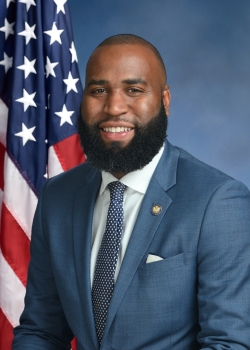STEM programs promise the most underserved students a future in tomorrow’s economy
The world is rapidly changing, and the future is rushing towards us. A week will see the same changes and developments that past generations were accustomed to seeing in a year, or even a decade. Indeed, American “productivity” increased 400% from 1930 to 2000. Younger generations struggle to keep up with increasing demands. As the world becomes more complex, many vocations that previously provided good pay and stability – middle-skill jobs, like manufacturing, accommodation, retail and food service – are anticipated to be replaced in the near future, at least in part by automation.
Disadvantaged populations are expected to be hit the hardest according to a study done by the Pew Research Center. Structural racism is easy to see: presently, Black workers make up only 9% of those employed in STEM related fields, and only 5% in engineering jobs.
But, we can reverse this trend. Average tech job wages are 49% higher than average NYC private sector wages, and by increasing access to STEM training early on, our state can create a viable career path for students with an interest in these fields.
But, for it to work, we need funds.
Schools are struggling to keep up. The few programs that prepare young people for the future are not doing so on the scale necessary to address the complex, integrated, and global nature of accelerating change. That’s especially true in my district, which encompasses the neighborhoods of Crown Heights, Prospect heights, Leffert Gardens and Flatbush in Brooklyn.
We can’t wait for this deficit to solve itself. We must work together with the government, private sector, educators and parents to reinvigorate K-12 education for a new generation.
Parents, frustrated with the learning gap and digital divide, have begun seeking afterschool programs that promise not only to expose students to new education systems, but to improve readiness for tomorrow’s workforce. I am proud to support these programs.
One among them – serving our students right here in Brooklyn, in Brownsville and District 17 schools, is called the Brooklyn Mobile Technology Coalition (BMTC).
The program, which serves middle-school students, aims to immerse students in STEM and tech career pathways. Brooklyn Mobile Technology Coalition shows local students how to apply what they learn in the classroom, in the workforce. Students are exposed to various careers, learning exactly what it takes to become successful in different career paths. By bringing experts from STEM related fields into Brooklyn classrooms, students are able to ask questions, tinker around with the latest gadget, and receive world class instruction from people who work in the field.
Parents in our district are hopeful for the first time – not only for their kids’ futures – but because they are experiencing something that’s been missing for a long time in their kids: enthusiasm. As somebody with a background in helping kids in k-12 achieve their academic and life goals, serving as an advocate counselor with the non-profit CAMBA, I came to recognize what works and what doesn’t. Enthusiasm and attending curiosity, sparked by hands-on learning experiences, were some of the strongest indicators for future success. The best programs and the best teachers understood the importance of sparking interest by imbuing their classes with something I call the ‘cool factor’. By fostering a learning environment where curiosity is paramount, students were more engaged and likely to maintain interest down the line.
It is not enough to read a textbook or listen to a teacher, students must be able to experience learning through hands-on encounters. We already bring frogs into the classroom – an experience – and for many, an unpleasant one, that marks the early memory of most Americans. The idea behind the practice was to bring an abstract anatomy drawing into real life. Programs like BMTC aim to do the same with modern technologies, spare the dead animal. BMTC hopes that their approach will make lasting impressions, providing tomorrow’s tech leaders with their first encounter that precipitates lifelong involvement.
For programs like this to expand and grow, collaboration is essential. The state has already paved the way to make workforce development an essential cornerstone of the climate action plan. Now, we have to make sure that it is a part of the plan forward in STEM and STEM-adjacent careers.
Other cities, like Philadelphia, are investing in tech workforce development programs in high schools, with applications outpacing openings two to one. These programs are key, not only to competing on a global playing field, but to increasing the representation of people of color in STEM fields.
When business and industry work together with information education systems, new opportunities become reality. Workforce development – building a pipeline of knowledgeable, capable workers for the future – can be as simple as combining the efforts of educators and business leaders. We have local community leaders who are up to the task of making this a reality, and they know our school’s and students. I aim to provide assistance and resources to bolster this synergy.
Our City is already a hub for the tech sector, with jobs in this field growing over 30 percent in the last five years. Now, the government and private sector must partner to expand STEM programs like BMTC: it’s a mutually beneficial investment. An investment in our student’s – and in our city and state’s economy.
Brian Cunningham is the Assemblymember for the 43rd AD in Brooklyn, representing Crown Heights, PLG, and parts of Flatbush.

